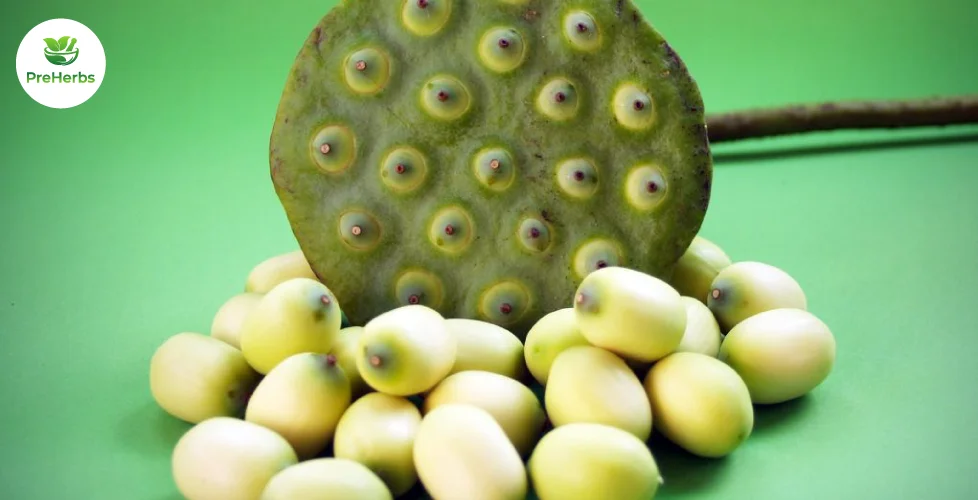People have revered lotus plants for centuries for their beauty, symbolic significance, and medicinal properties. Among the various types of lotus, the Blue Lotus (Nymphaea caerulea) stands out for its unique characteristics and benefits. In this blog, we’ll explore the key differences between blue lotus seeds and other lotus varieties, as well as the specific benefits each type offers.
Related blog Blue Lotus Strain: Everything You Need to Know
Key Differences Between Blue Lotus and Other Lotus Varieties
To grasp the key differences between Blue Lotus and other lotus varieties, you must understand their unique properties and uses. While all lotus species share certain characteristics, the Blue Lotus stands out due to its distinctive appearance, historical significance, and specific therapeutic benefits.
Botanical Classification
Blue Lotus (Nymphaea caerulea): Often referred to as the Egyptian Blue Lotus, it belongs to the water lily family, Nymphaeaceae. It is not a true lotus but a type of water lily.
Sacred Lotus (Nelumbo nucifera): Also known as Indian Lotus, it belongs to the family Nelumbonaceae and is a true lotus.
Appearance
Blue Lotus: Known for its striking blue petals and yellow center. The flowers are smaller and have a unique star-like shape.
Sacred Lotus: Typically, it has larger, rounder flowers that can be white, pink, or red. The petals are broader, and the flowers are more cup-shaped.
Habitat
Blue Lotus: Native to the Nile and other parts of East Africa. It thrives in slow-moving water bodies like ponds and lakes.
Sacred Lotus: Native to Asia and Australia. It grows in a variety of wetland habitats, including lakes, rivers, and floodplains.
Cultural Significance
Blue Lotus: It held significant cultural importance in ancient Egyptian civilization, symbolizing rebirth and the sun.
Sacred Lotus: revered in Hinduism and Buddhism, symbolizing purity, enlightenment, and rebirth.
Related blog Is Blue Lotus Safe? Potential Benefits and Side Effects
Benefits of Blue Lotus Seeds
Blue lotus seeds, revered for centuries in traditional medicine, offer a wealth of health benefits. Known for their rich nutritional profile, these seeds provide a natural remedy for improving digestion, enhancing sleep quality, and boosting overall well-being.
Relaxation and Stress Relief: Blue Lotus seeds and extracts are known for their mild sedative properties, which can help reduce anxiety and promote relaxation. They are often used in teas and infusions to aid in stress relief.
Aphrodisiac Properties: Traditionally, Blue Lotus has been used as an aphrodisiac. Its compounds are believed to enhance sexual arousal and performance.
Antioxidant Effects: Blue Lotus seeds contain antioxidants that help combat oxidative stress and protect the body from free radical damage.
Mild Psychoactive Effects: Consumed in larger quantities, Blue Lotus can induce mild euphoria and a sense of well-being, making it popular in recreational and spiritual practices.
Benefits of Other Lotus Varieties (Sacred Lotus)
The Sacred Lotus, renowned for its beauty and cultural significance, offers a myriad of health benefits beyond its aesthetic appeal. People prize Blue Lotus for its relaxing and mild psychoactive effects, making it a favorite for spiritual and recreational use. In contrast, they celebrate Sacred Lotus for its wide range of health benefits, from cardiovascular to digestive health, making it a versatile ingredient in culinary and medicinal applications. In this section, we’ll explore the remarkable benefits of these revered plants.
Digestive Health: Sacred Lotus seeds and rhizomes are rich in dietary fiber, which aids in digestion and helps prevent constipation.
Cardiovascular Health: The seeds and leaves of the Sacred Lotus contain alkaloids and flavonoids that promote heart health by reducing blood pressure and improving circulation.
Anti-inflammatory Properties: Sacred Lotus has anti-inflammatory compounds that can help reduce inflammation and pain in the body.
Skin Health: Extracts from the Sacred Lotus flower are used in skincare for their hydrating and anti-aging properties. They help improve skin elasticity and reduce the appearance of wrinkles.
Nutritional Benefits: Sacred Lotus seeds are a good source of protein, vitamins, and minerals. They provide essential nutrients like vitamin C, B vitamins, potassium, and magnesium.
Related blog Exploring the Spiritual Benefits of Blue Lotus: Insights and Practices
Conclusion
While both Blue Lotus and Sacred Lotus have their own unique characteristics and benefits, they serve different purposes in traditional medicine and modern wellness practices. People prize Blue Lotus for its relaxing and mild psychoactive effects, making it a favorite for spiritual and recreational use. In contrast, they celebrate Sacred Lotus for its wide range of health benefits, from cardiovascular to digestive health, making it a versatile ingredient in culinary and medicinal applications.
When choosing between blue lotus seeds and other lotus varieties, consider your specific needs and desired effects. Whether you seek relaxation, a nutritional boost, or skincare benefits, the lotus family offers a rich tapestry of options to explore.



